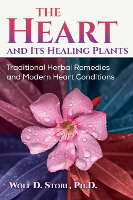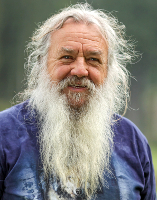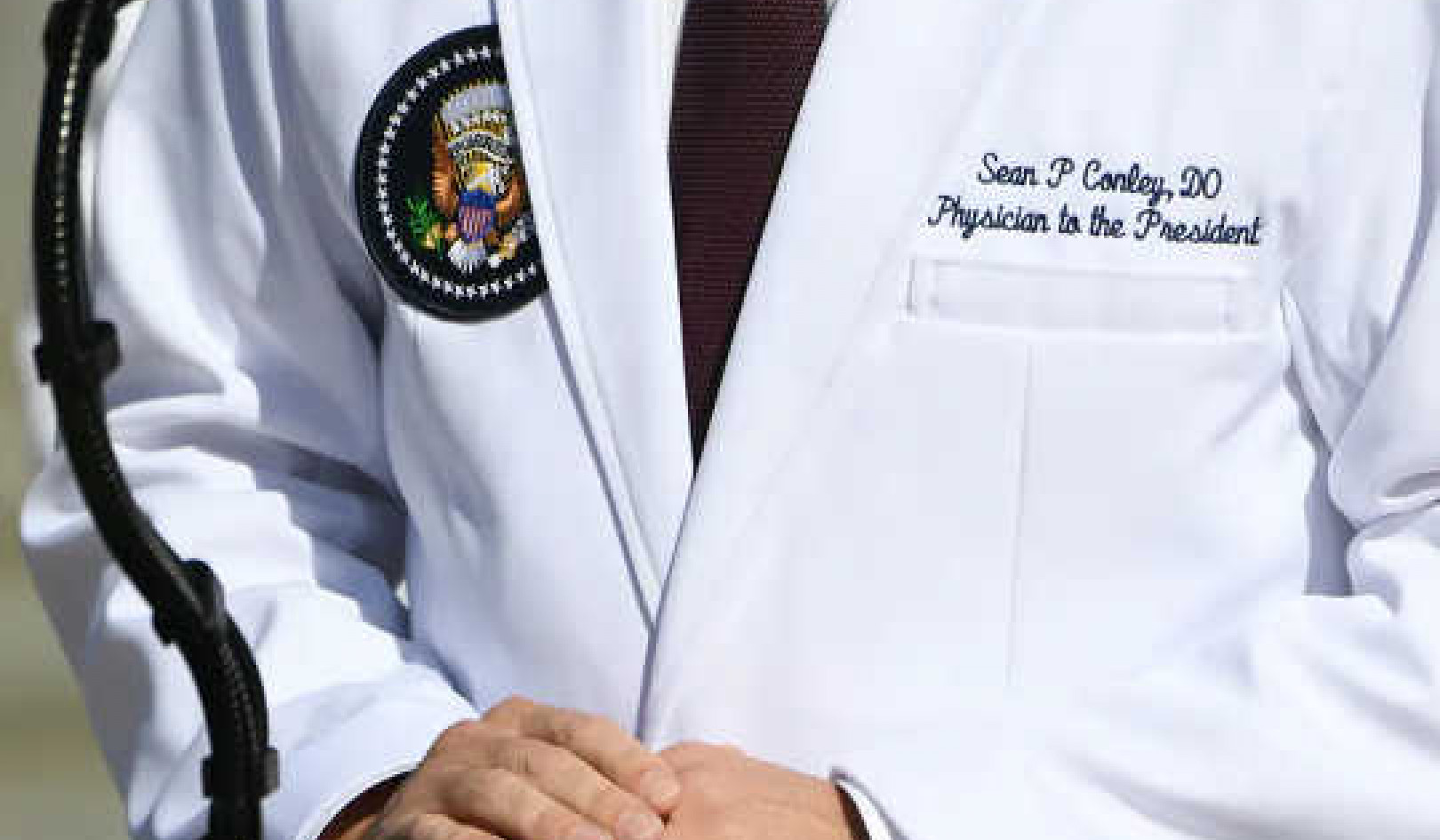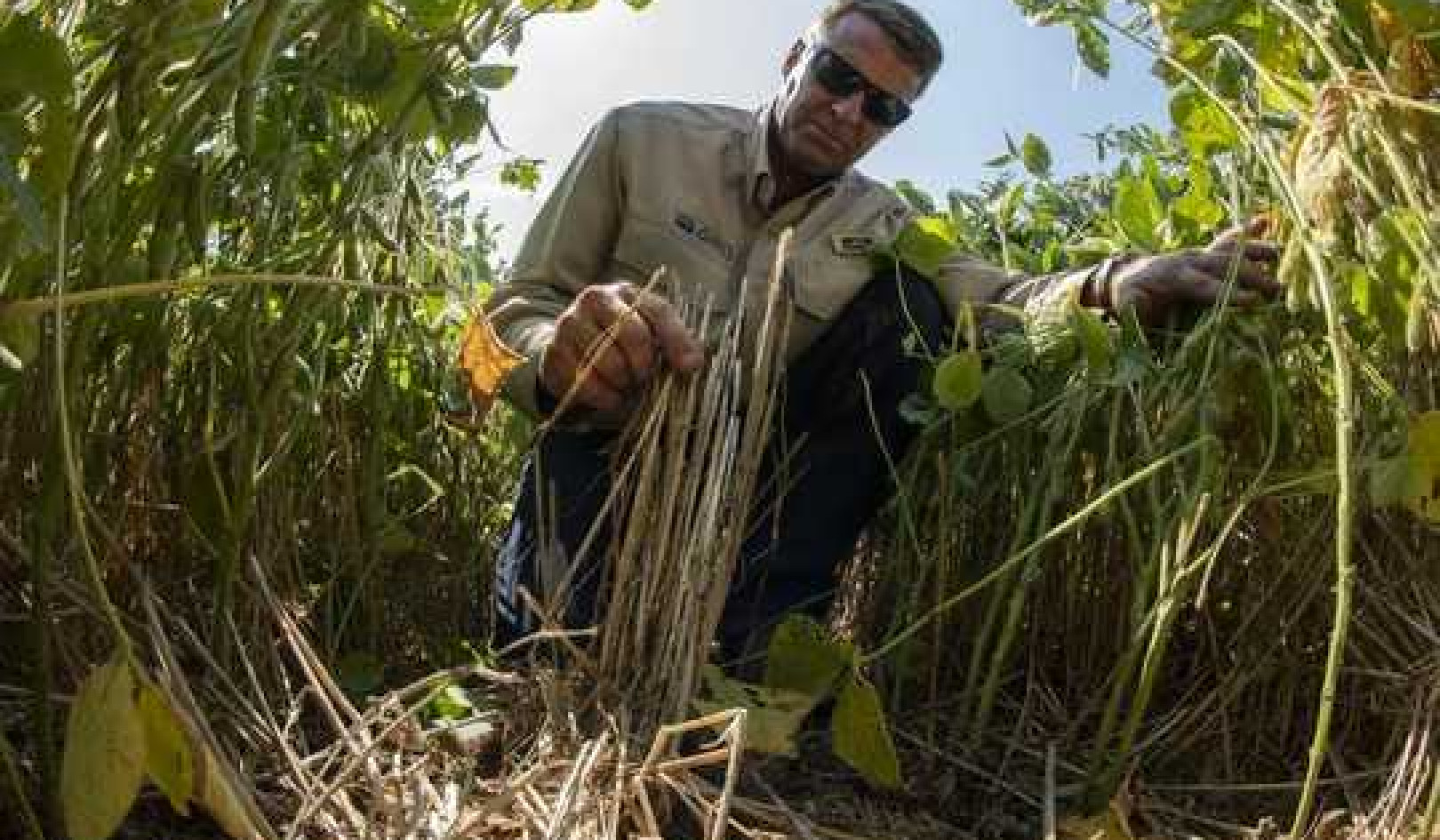
Article Summary: Heart disease, often seen as a mechanical pump problem, has deeper roots that intertwine with our emotional and cultural health. Modern treatments focus on the pump, yet indigenous and traditional remedies offer a different perspective. These cultures rarely faced heart ailments, attributing them more to spiritual and emotional factors than physical ones. By understanding heart disease causes and exploring these diverse remedies, we can gain insights into holistic heart health.

Heart Disease: Is it a Pump Problem or a Soul Problem?
by Wolf-Dieter Storl Ph.D.
The heart, according to a modern medical dictionary, is the muscular central organ of the circulatory system; in an adult, the hollow organ made of muscular tissue, and weighing approximately 10.5 ounces, functions as a double-acting pump (Minker 1992, 124). This small high-performance motor, this “580-horsepower machine”—as Austrian heart surgeon Dr. Ferdinand Waldenberger calls it—pumps blood out of the cavities sixty to eighty times a minute.
The corresponding circulatory system stretches over some 62,130 miles, or two-and-a-half times around the entire Earth. The heart beats about 100,000 times a day, more than four million times a year, and around three billion times in a normal lifetime. Four to seven quarts of blood flow per minute, or 2,000 gallons per day. During a normal lifetime, the human heart pumps enough blood to fill two oil tankers (Waldenberger 2003, 15).
All sorts of things can, of course, go wrong with this little machine. We have a veritable heart industry—full of highly qualified health engineers and “mechanics”—that can keep the pump going. Many heart medicines have undesirable side effects. Beta-blockers, for example, can constrict the blood vessels and cause sleeping disorders and impotence. Antiarrhythmics can cause tinnitus, impaired vision, sensitivity to sunlight, and even weaken the heart muscle (Maxen, Hoffbauer, and Heeke 2005, 343). The most dangerous side effect of antiarrhythmics, which include beta-blockers, is irregular heartbeat—meaning they can cause the very symptoms that they should be alleviating.
Despite the billions that are spent to keep the pump-and-tube system functioning smoothly, coronary diseases remain number one among the deadly diseases in the modern world. Approximately half of the deaths in industrialized Western societiescan be chalked up to coronary disease.
In 1996, the German medical journal Ärztezeitung cited approximately one million heart attacks per year in Germany alone, with 200,000 of them resulting in death. In the United states in 1997, nearly one million people died of coronary diseases (Schmertzing 2002, 72). In addition, some 600,000 new patients in Germany develop coronary disorders each year—a typical statistic for a modern Western country.
Heart Remedies of Indigenous Peoples
With regard to heart health problems, things have not always been like they are now—neither for our ancestors nor for any traditional and indigenous peoples. In either case, heart ailments were hardly known.
Of course, the heart pounds wildly in the face of danger, or becomes pain-ridden through suffering and sorrow, or stands still in extreme shock, or can even be broken. A heart might also be stolen, charmed, or bewitched. But heart diseases as we know them in the modern, industrialized age were—and still are in so-called developing countries—essentially unknown. When ethnopharmacologists search through the healing lore of indigenous peoples, they find very little that pertains to any kinds of heart ailments.
Indigenous peoples—hunter-gatherers as well as hoe-farmers—have always made use of a wide range of healing herbs, barks, and roots. These medicinal plants reflect the health problems of the people. Many of these cures involve hemostatic plants, which are used to stop bleeding, heal wounds, and fight topical infections. There are also numerous healing plants for gastrointestinal illnesses, stomach cramps, diarrhea, worms, and skin rashes; and many purgatives are found that induce vomiting, diarrhea, sweating, or urination—bodily reactions that help rid oneself of toxins, including such afflictions as “magic arrows,” “worms,” and “evil spirits.”
In colder northern climates, indigenous peoples made use of various plants for the lungs, such as colt’s foot, angelica, witch hazel, heath milkwort, burnet, and thyme. Lung problems were fairly common due to the cold climate and the smoke from the open fires in the houses. Healing plants containing salacin—such as willow bark or meadowsweet—helped with rheumatism and arthritis, which were common ailments in places where people slept on cold, damp earthen floors. Painkillers, diuretics, anti-inflammatory agents, and plants for healing broken bones were also found in abundance among European indigenous peoples.
In addition, a profound knowledge regarding consciousness-altering natural drugs, which were used in a sacral-cultural context (and mainly by the men), was, and is, present. The women possessed a wide spectrum of gynecological healing plants for menstrual difficulties and various female disorders, as well as plants that supported fertility and birth (Lipp 1996, 21; Wolters 1999, 79). There were also plenty of plants used by women to bewitch men.
But cardiac medicines are hardly found in indigenous herbal lore. If one does come across a cardiac medicine, it will most likely be a plant with glycosides, which strongly affect the heart and can be used to poison the tips of arrows. For instance, the Celts applied the poisonous juice of hellebore to the tips of the spears and arrows used for hunting deer.
The African Pygmies made a decoction of the seeds and roots of plants containing strophanthin (such as the aforementioned climbing oleander or laurel rose) and soaked their arrow tips in it for hunting elephants. No matter where the animal was hit with the arrow, it would die of catalepsy and heart failure. In modern cardiac medicine, strophanthin is regarded as a kind of wonder drug; in very exact and controlled doses, it is administered as an injection for acute heart insufficiency (bradycardia) and cardiac decompensation.
I became quite aware how native people did not have a tradition with cardiac medicine when I was undertaking ethnobotanical excursions in the Bighorn Mountains in Wyoming and Montana with my Cheyenne friend Bill Tallbull. The Cheyenne had been forced onto a small reservation. They had to endure the authorities making harsh demands on them, religious fanatics trying to convert them, teachers punishing them for speaking their own language, social workers snooping into their family matters, and do-gooders questioning the old Cheyenne ways and values, all of which was especially confusing for the younger generation.
And then there was the daily struggle to survive amid a lack of employment opportunities and the unscrupulous actions of the big mining corporations that disregarded traditional land-use rights and moved in with loud machinery, scraping away the sacred soil. The culture of these once-proud bison hunters was further threatened by hopelessness, violence, alcoholism, social disintegration, and the loss of their native tongue. The old medicine man had taken all this so much to heart that his heart was in pain.
“But you native Americans have so many healing plants,” I said. “Don’t you have healing plants for heart ailments?”
“Before we were forced on to a reservation and we took on the lifestyle and eating habits of white people, we had no heart ailments,” he answered. “Diabetes was also unknown, which is now a big problem for our people. We had no tooth decay, cancer, or extreme obesity. Those diseases were unknown to us, so we have no healing plants for them. We drink Mo e’-emohk’ shin [Elk mint]* as a tea when we have intense pain in the chest due to coughing or if someone has a weak, dispirited heart. We pray for help, but sometimes it takes a long time before the plant spirits take pity on us and show us their healing powers.”
Heart Ailments in Old European Traditions of Folk Medicine
For the various old European cultures—whether in the Mediterranean regions or in the northern woodlands of the Slavic, Germanic, and Celtic peoples—heart disease was as little known as it was among Native Americans. The heart was perceived as the place where vitality and courage originated; it was never understood as a mechanical pump. Its rhythmic heartbeat was the very pulse of life—just like how in nature the cycles of day and night, or the ocean tides, represent life’s natural rhythm.
According to older Germanic traditions, a heart was either big or small: a coward had a small heart, whereas a courageous person had a big one. The heart was seen as either warm or cold, hard or soft; if someone was greedy, haughty, arrogant, or merciless, this was associated with a cold and hard heart. By contrast, a good person had a soft and warm heart, capable of sympathy, kindness, and compassion. Heart ailments were therefore seen as sicknesses of the soul and not as organic or functional maladies.
Copyright 2024. All Rights Reserved.
Adapted with permission of the publisher,
Healing Arts Press, an imprint of Inner Traditions Intl.
Article Recap: The heart is more than a mechanical pump; it embodies the essence of our emotional and spiritual well-being. Modern medicine often treats the symptoms, but traditional and indigenous practices remind us of the importance of addressing the root causes. By integrating these holistic approaches, we can better understand heart disease and enhance our heart health. Embracing both modern and traditional wisdom offers a comprehensive path to heart wellness, addressing not just the physical but also the emotional and spiritual facets of heart health.
Article Source:
BOOK: The Heart and Its Healing Plants
The Heart and Its Healing Plants: Traditional Herbal Remedies and Modern Heart Conditions
by Wolf-Dieter Storl Ph.D.
 Renowned ethnobotanist Wolf D. Storl, Ph.D., examines traditional understandings of the heart from early European cultures and indigenous peoples as well as a wealth of plants used in both ancient and contemporary times to treat heart conditions and ailments. He examines what makes the heart sick, including different healing paradigms used to address the causes. He also looks at how time is perceived by the heart and how the modern epidemic of heart disease can be linked to our culture’s pervasive disconnection from nature’s rhythms.
Renowned ethnobotanist Wolf D. Storl, Ph.D., examines traditional understandings of the heart from early European cultures and indigenous peoples as well as a wealth of plants used in both ancient and contemporary times to treat heart conditions and ailments. He examines what makes the heart sick, including different healing paradigms used to address the causes. He also looks at how time is perceived by the heart and how the modern epidemic of heart disease can be linked to our culture’s pervasive disconnection from nature’s rhythms.
Sharing a holistic view of the heart—and heart disease—this book reveals new ways to heal the heart by recognizing its integrated role in our physical, emotional, and spiritual wellness.
For more info and/or to order this book, click here. Also available as a Kindle edition.
About the Author
 Wolf D. Storl, Ph.D., is a cultural anthropologist and ethnobotanist who has taught at Kent State University as well as in Vienna, Berne, and Benares. He is coauthor of Witchcraft Medicine and author of more than 30 books on indigenous culture and ethnobotany in German and several in English. He lives in Germany.
Wolf D. Storl, Ph.D., is a cultural anthropologist and ethnobotanist who has taught at Kent State University as well as in Vienna, Berne, and Benares. He is coauthor of Witchcraft Medicine and author of more than 30 books on indigenous culture and ethnobotany in German and several in English. He lives in Germany.
Visit the Author's Website: https://www.storl.de/english-books-by-wolf-d-storl/
More books by this Author.





























